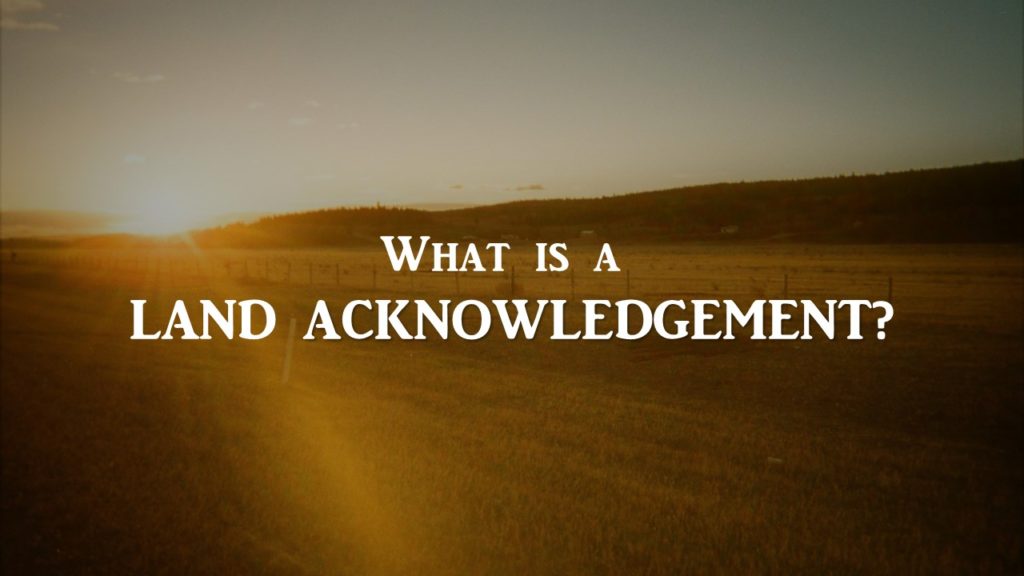
“To further demonstrate our commitment to the work of Truth and Reconciliation with Indigenous Communities,” our church is in the middle of developing a formal “land acknowledgement” – but what exactly does this mean? Our Missions, Peace, and Justice committee provided a helpful document at this year’s Annual General Meeting that would be worth sharing again:
What is a land acknowledgement?
- it is a simple, meaningful way of showing respect and recognition to who the first people of the land were and counters the “Doctrine of Discovery”
- it is a step towards correcting the stories and practices that erase Indigenous people’s history and culture and toward inviting and honouring the truth.
- it is an act that raises awareness about our own history and how we came to inhabit this land.
- it reminds us that the land rights of Indigenous Peoples, especially in BC, have not been settled by the governments. It prompts us to call for, and support, a just settlement.
- it invites us to repair relationships with Indigenous communities and with the land.
What it is NOT:
- a partisan political statement. It is not siding with one particular political ideology or party.
- a legal opening that can be used to take away private properties. Indigenous leaders have made it clear that they do not want to see citizens dispossessed of their land. They want a just settlement with the government. This is an issue of respect and goodwill.
- simply a politically correct gesture to make ourselves feel good. It can certainly be this, though, if we do not take further steps. Doing an acknowledgement ought not be a token gesture. That renders it meaningless. The invitation to change relationships, our understanding of history, and existing structures must follow.
What dooes it look like?
According to Kairos (2018):
“It can take place in a variety of ways and can be visual and/or spoken and used in different contexts. In many cases, it might include a spoken statement at the beginning of each worship service. An acknowledgment of territory could be printed in the church bulletin, written on the church sign outdoors or be connected to a piece of visual art or a map somewhere in or on the church building. If your church has a garden our outdoor area, it could be present there. There could be a special plaque with this information. It might be present on the church’s website. It might be spoken not only during worship but also during church meetings and other gatherings. Consider how and where your church history is presented and how to integrate a territorial acknowledgment into that story, as well as any work throughout your church’s history towards reconciliation and right relations.”
What does it mean to Indigenous peoples?
- “It shows that people are willing to hear you out as an Indigenous person, and they recognize that your culture and your past really mean a lot.”
- “It reminds us we are accountable to these relationships … of the accountability that everybody has to listen to the concerns of the community and how we can align to our [Indigenous] community.”
- “It’s not about making people feel guilty or taking land back. It’s about respect and telling the truth…..when you do it with a good heart you give following generations a chance at a better future.” (Sumas Band representative)
For a very helpful resource see the website of Kairos (of which Mennonite Church Canada is a member). It can be found here.
